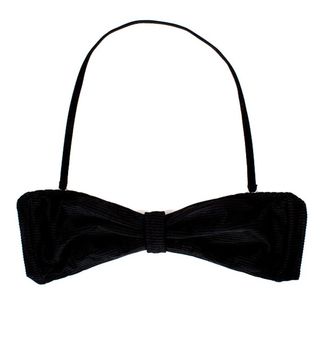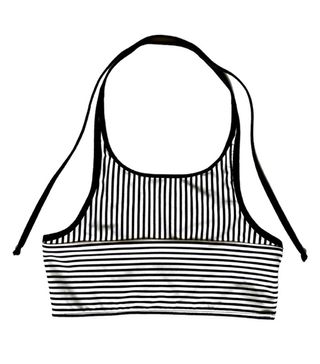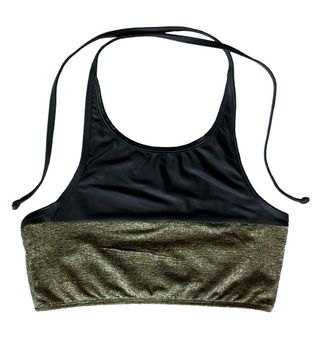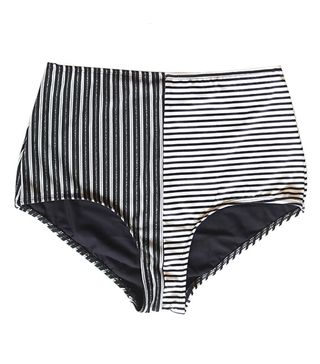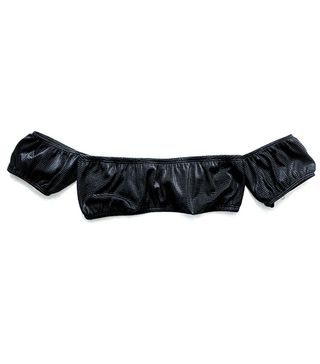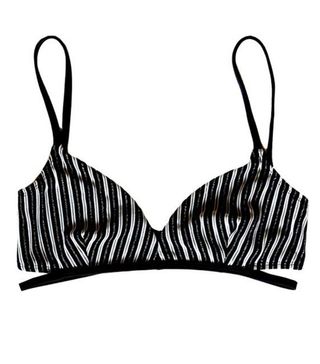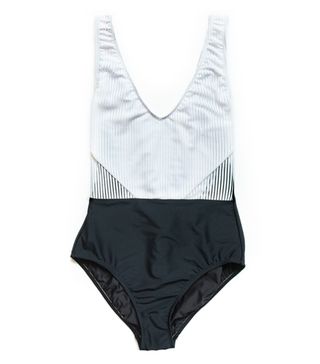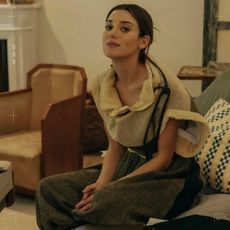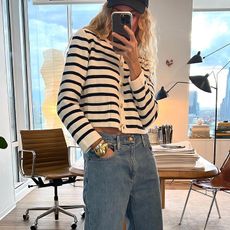What Exactly Goes Into Designing and Producing a Swimsuit?
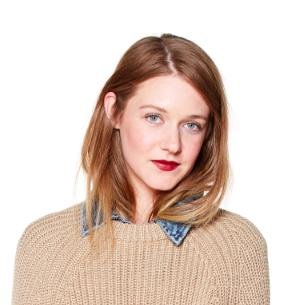
Meet Giejo, readers. If you haven't heard about this swimwear line yet, you're in for a real treat. Who What Wear friend and designer Gabby Sabharwal founded the brand with the hope of giving women of all shapes and sizes the option to pick swimsuits that not only flatter their figures but also provide them the option to mix and match based on their personal style. If the idea of this intrigues you at all, or if you're interested in how a swimsuit is designed and produced, scroll down for our interview with Sabharwal for the inside scoop on all things swimwear.

WHO WHAT WEAR: How do you decide which shapes to create?
GABBY SABHARWAL: Giejo initially started as something just for me after an unsuccessful search for a new suit. I needed something that I could wear in front of my boyfriend’s parents that also represented my personal style of mixing and matching prints, textures, and the juxtaposition of interesting color combinations. After I created the first initial styles, I also reached out to friends and colleagues to get a better understanding of their favorite styles and what they felt was missing from the market.
WWW: What is the process like?
GS: I had always aspired to be a designer, but after a few unsuccessful attempts at taking sewing and pattern-making classes, I thought it would be an impossible feat. Instead, I took a job in public relations. Through my work in PR, I met several designers who encouraged me to be resourceful and start a collection.
After finding a void in the market, I started Googling, conducting market research of the current swim industry, and asking everyone I knew about design and how to start a business. Some of those questions included:
- How do you make a swimsuit?
- What fabric do you need to buy to make swimwear?
- Where can you buy swimwear fabric?
- Production facilities in New York?
- Where to find a pattern maker?
- What is a pattern maker?
- Where to find a grader?
- Where to source hardware?
- Sanitary requirements for swimsuits?
- Where to buy hygienic liners?
- Standard swimsuit sizing?
- How to form a LLC?
- How to price items?
- What is a suggested markup?
- Where to buy hangtags?
- How to make labels?
- How much money do you need to start a business?
- Do you need an investor?
As mentioned earlier, I am not very talented at sketching, so I pulled together inspiration images, my own swimsuit wardrobe, swimsuits from my friends’ collections, and lingerie, and from there, built upon my ideal swimsuit collection. Then I worked with a pattern maker to bring those silhouettes to life, and was able to source the fabric and hardware necessary in the Garment District—it was a true Project Runway moment for me. Then I took all the items to a sample maker, where my vision started to materialize.
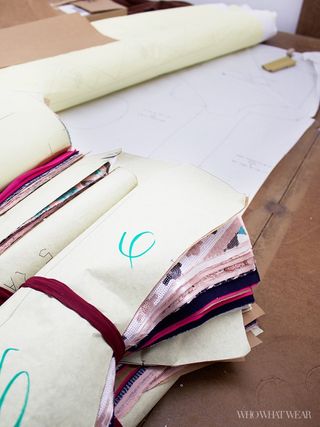
GS: Then after you get the first samples, you do fittings. I try them on myself, a fit model, and my friends to ensure the size small (small is what you use to grade) is perfect. Once confirmed, I then take the pattern to a grader, who converts them into XS, S, M, and L. (After that), I have samples made of those sizes and try them on my friends of various body types to make sure they fit. Grading is usually standardized, but as swimwear has a complex fit; it often needs to be adjusted. After that, the swimsuit is ready for production.
WWW: Does it come out the right way every time, or do you have to go back and rework?
GS: If only everything came out perfect the first time you tried. It is definitely a process. There are several rounds of trial and error, fit, and refitting, and tiny changes with stitching, hardware, and construction to make the suit a perfect fit.
WWW: How do you design to complement different women’s bodies?
GS: I design with all body types in mind. My swimsuits are sexy yet conservative, and each silhouette has a unique approach for different occasions. I know the feeling of trying on swimsuits in a fitting room or at home and wanting to die. I made Giejo to make women feel good about themselves and to not have to scramble for a beach bod right before the summer.
WWW: What are things you keep in mind for fit?
GS: Our styles are multifunctional and convertible. There are adjustable and removable straps, side ruching, seamless technology, and reversibility.

WWW: What are all of the different elements you have to gather for production?
GS: Fabric, lining, thread, elastic, a Giejo label, a sizing label, a hangtag, a hygienic liner, boning, a clasp, a slider, a ring, a poly bag, and zippers.
WWW: Do you decide in the stores, or is it something you think about ahead of time and then seek out?
GS: Usually when I am shopping for essential elements (hardware, thread, liners, etc.), I am on a mission. The Garment District can be an overwhelming place, but I have created a community there who help me get the job done. Now shopping for fabrics is really where I have my fun. It is like retail therapy for me. I could spend hours roaming my haunts in the Garment District and sifting through fabrics in old warehouses.
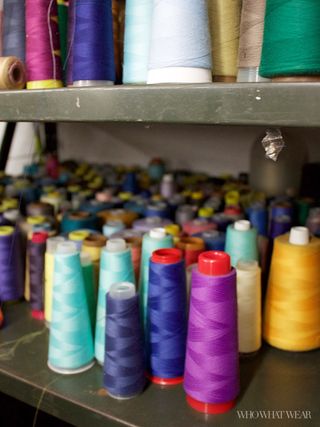
WWW: Where do you go for these things?
GS: One element that makes Giejo really unique is that we utilize surplus and reclaimed fabrics in our limited-edition designs. We visit fabric stores and jobbers in the Garment District and the tristate area. We get our hardware from Trimming Advantage and our thread and zippers from Sil in the Garment District.
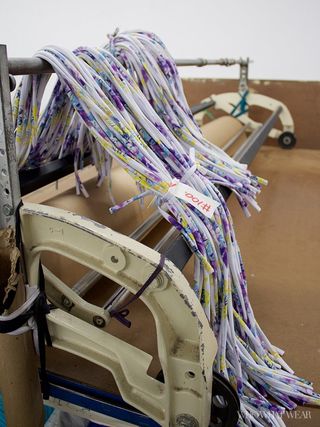
WWW: Where is your swimwear produced, and how did you find them?
GS: Our swimwear is produced locally across the river in New Jersey. We found them through endless Google searching and recommendations.
WWW: How often do you visit the factory?
GS: During production, I am there once a week. Otherwise I usually visit once a month. During fittings, I am there two to three times per week.
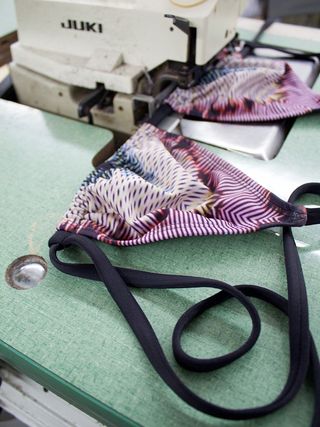
WWW: What’s it like when you go there? What are the different purposes?
GS: I go there to drop off samples, patterns, grading, and fabric; and for fittings; to check on production; to answer questions. I am very hands-on!

WWW: What happens once the swimwear is sewn and ready for you to review?
GS: I inspect each garment individually to ensure the quality and fit are up to par.
WWW: Lastly, are there common pitfalls or obstacles that come with designing swimwear?
GS: Like when designing anything, there is constant change and need for improvement. As our swimwear is very technical in prints and design, the factory can often make mistakes. The laying out of the fabrics before cutting the fabric is one of the most important steps in the process, because all swim fabrics stretch differently. And that can really make or break the suit. Also, making sure the measurements for the grading are correct [is important], because fit is the most important element of swimwear."
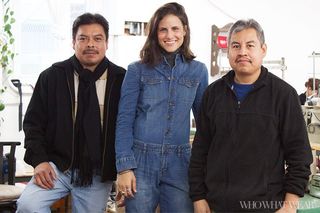
Keep going to shop stylish swimwear from Giejo!

Nicole Kliest is a freelance writer and editor based in New York City who focuses on fashion, travel, food, wine, and pretty much anything else that's amusing to write about. After graduating from Pepperdine University with a bachelor's in journalism and creative writing, she started her career back in 2010 as Who What Wear's photo editor and throughout the last decade has contributed to publications including Fashionista, Harper's Bazaar, Elle, The Zoe Report, PopSugar, Fodor's Travel, and several others. She also copywrites and has worked with clients such as Frame, Sea, 3x1, Intelligentsia, and others to develop brand voices through storytelling and creative marketing. She's very passionate about the ways we can improve our sustainability efforts in the fashion industry as well as cultivating content that's diverse and inclusive of all people. When she's not checking out the latest restaurant opening in her West Village neighborhood or riding her bicycle along the West Side Highway, she can be found scheming her next trip somewhere around the world. (Up next is Vienna.)
